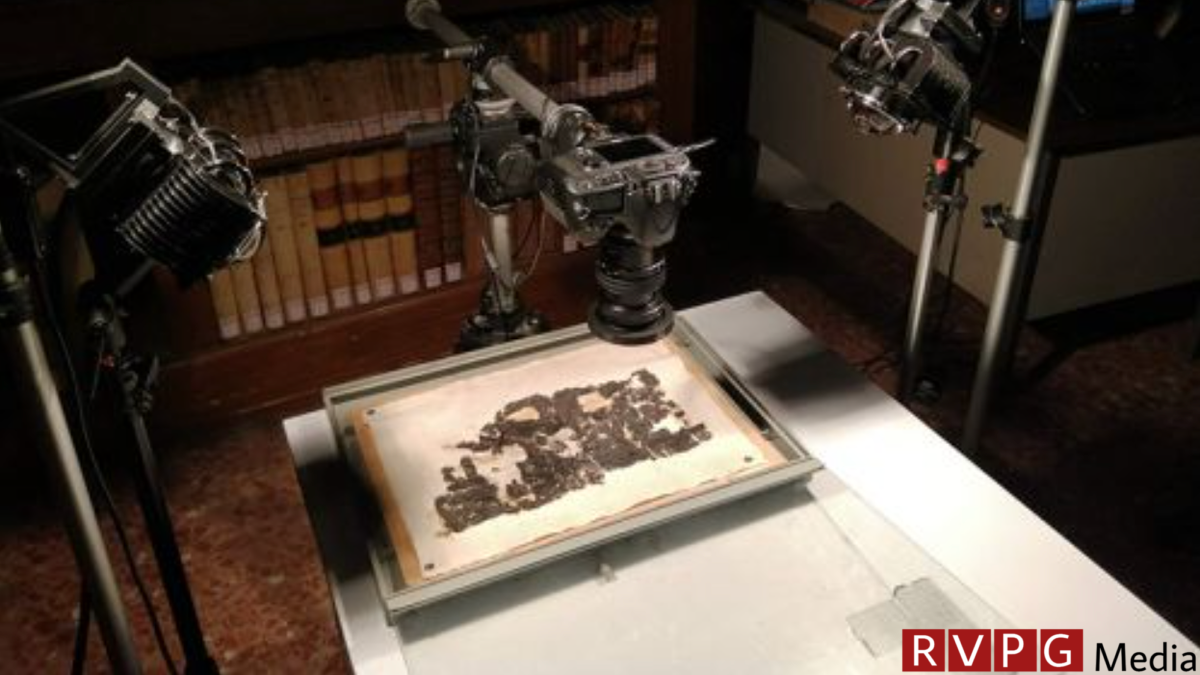The Greek philosopher Plato – Socrates’ student and Aristotle’s teacher – died almost 2,400 years ago after writing a lengthy work on political philosophy, aesthetics, ethics and more (he invented Atlantis!). This week, researchers announced they had found the famed philosopher’s burial site and details of his final moments in a nearly 2,000-year-old document that was charred by an ancient volcanic eruption.
Vesuvius blew its summit 1,945 years ago, burying the Roman cities of Pompeii and Herculaneum in ash and freezing their populations in time. In Herculaneum, a villa filled with documents – now known as the Villa of the Papyri – was buried and its contents charred.
Now researchers have… Greek schools research project used optical coherence tomography and infrared hyperspectral imaging to scan the characters trapped in the carbonized scroll and have so far identified about 1,000 words that revealed details about Plato’s final days and death.
The papyrus was inked by Philodemus of Gadara, a poet and philosopher based in Herculaneum. Researchers knew that Plato was buried on the grounds of the Academy – the academic school he founded in Athens – but his exact resting place was unknown. According to Graziano Ranocchia, a papyrologist at the University of Pisa and lead researcher on the project, the texts suggest that Plato was buried in a private garden near the academy’s shrine to the Muses. The academy was destroyed about 300 years later by the Roman general Sulla and its archaeological remains are now in Akadimia Platonos, a neighborhood in Athens about two miles from the Acropolis.
Other details from the recently translated text provided different dates for Plato’s sale into slavery – either 404 B.C.E. or 399 BC. BC and not 387 BC. The scroll was also about Plato’s last night: “He had a high fever and the music they were playing bothered him,” Ranocchia said in one ANSA publication.
Ranocchia added that a musician from Thrace played the flute to ease the ancient philosopher’s final hours, but Plato did not like the music. He told the musician she had “a poor sense of rhythm” – if it had been 2,400 years later, Plato could have simply chosen Pandora.

Artificial intelligence is helping researchers digitally unravel the scrolls, which are generally too fragile to physically open. Early attempts to unpack the scrolls, found by a farm worker in 1750, resulted in their destruction. Unfortunately, the contents of these scrolls have been lost over time. Last year, the word “purple” was found and translated for the first time from an unopened papyrus scroll, which brought the finder $40,000.
Virtual unpacking also takes place elsewhere. In 2015, a team at the University of Kentucky used X-ray tomography and computer vision — a field of artificial intelligence that allows machines to “see,” or extract information from visual data — to read a Dead Sea Scroll without it having to open.
Previous digital unraveling of the Herculaneum Scrolls used neural networks to identify the presence of ink in the scrolls. As computer vision and other artificial intelligence technologies improve, researchers will be able to non-invasively look deeper into these fragile documents. Not only will we learn more about the ancient past, but the documents will also be preserved for the next generation of imaging techniques.
More: X-ray analysis of bones from Pompeii victims suggests they suffocated
